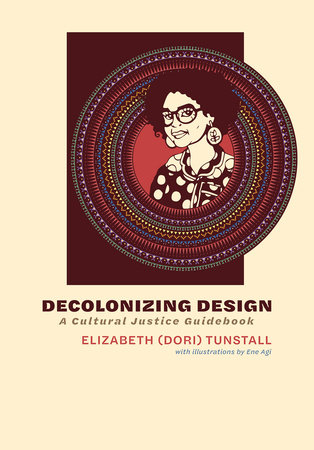Decolonizing Design Reader’s Guide
By Elizabeth (Dori) Tunstall


1. Intro: For whom did Dori say that she wrote the book and why?
2. Intro: Why is Dori’s lived experiences as a Black cis-female educated person who has lived in the United States, Australia, and Canada important for how you understand the book?
3. Intro: What does Dori mean by “making it a safer journey”? Why is the work of decolonizing design unsafe for those who take it on?
4. Chapter 1: Dori spends this chapter outlining her positionality vis-à-vis Indigenous communities. Why is that positioning important to the book’s ideas?
5. Chapter 1: How would you position yourself in relationship to Indigenous culture and communities?
6. Chapter 1: What is or would be the land acknowledgement of the place in which you live? Why is giving land acknowledgement important in decolonizing design?
7. Chapter 1: What are the mistakes that Dori keeps making in relationship to Indigenous people and communities? In what ways might these mistakes resonate with you?
8. Chapter 1: What do Dori and Peter mean by “design as making objects of liberatory communal joy”?
9. Chapter 2: How does Dori describe the European Modernist Project? Why does she describe it as a project and not just a period in time or an aesthetic movement?
10. Chapter 2: What are the two myths of the European Modernist Project?
11. Chapter 2: In what ways has the myth of “better living through technology” permeated your life?
12. Chapter 2: For whom is technology a “bad romance” and why?
13. Chapter 2: What suggestions does Dori offer to make technology achieve its decolonial promise?
14. Chapter 3: What has been the effect of the myth of “universal humankind” on design and for whom the field designs?
15. Chapter 3: Why is recognizing the values of white supremacy and gender biases of the Bauhaus and other European-derived design movements important to decolonizing design?
16. Chapter 3: What experiences might you had with designs that made you feel excluded?
17. Chapter 3: Look of the work of one of the people listed who are dismantling the racist bias in the European Modernist Project in design. How is their work making an impact on the design field?
18. Chapter 3: How might you approach Indigenous reconciliation in your design practices?
19. Chapter 4: What are the two pitfalls that companies should watch out for in their diversity, equity, and inclusion initiatives?
20. Chapter 4: Dori describes herself as a supertoken. What does she mean by that?
21. Chapter 4: Describe another supertoken whom you know professionally or from the media. What are their structurally excluded identities? What are their highly desirable talents? How do you think they are treated by the company/firm or by society in general?
22. Chapter 4: What countermeasures that Dori suggests to the two pitfalls?
23. Chapter 4: What were the conditions that made OCAD University’s Black cluster hire eventually successful?
24. Chapter 4: How might you have handled better than OCAD University the lead up to the Black cluster hire?
25. Chapter 5: In what way does the question of the financing to decolonize design might serve as an excuse to not go forward with the processes?
26. Chapter 5: For where you live, how much would be the rent owed to Indigenous communities and nations for being on their land in one year?
27. Chapter 5: What might you do with your finite budget to allocate more resources to the decolonization of design?
28. Bonus: What role does Ene Agi’s illustrations play in helping to understand the feelings of the book?
29. Bonus: What is your personal commitment to decolonizing design?
Just for joining you’ll get personalized recommendations on your dashboard daily and features only for members.
Find Out More Join Now Sign In